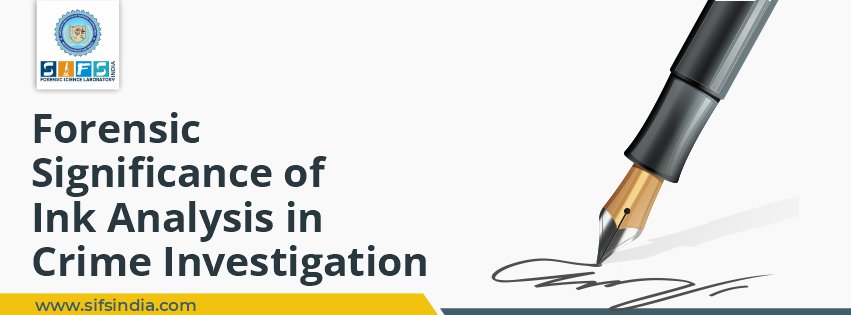A questioned document can be any document that contains any markings in form of typewriting, handwriting, signature, computer printing, etc., whose authenticity is under dispute.
Physical examination of documents has been in practice for many years but nowadays chemical examination of documents has also become a part of the daily routine of document examiners.
Ink is used in both handwritten and printed documents, so ink analysis is very crucial for document examination.
Ink analysis is also used in examining the obliterated documents. It is used to determine whether the two inks are of the same composition or different, what is the source of ink, age of ink which ultimately gives us the approximate age of the document.
There are different types of inks used in different pens such as ball pen ink is composed of dyes and organic solvents, gel pen, rollerball pen use gel-based inks, fiber or porous tip pen, vulnerable India pen, fountain pens use water-based inks, etc.
Ink analysis is basically a two-step process, which includes visual examination for e.g. differentiating ink by eyes based on their physical characteristics such as color, opacity, etc. followed by chemical or instrumental analysis which includes various techniques.
Techniques Used in Forensic Analysis of Ink
There are various techniques used for the examination of ink, some are destructive and some are non-destructive.
Non-destructive techniques are preferred over destructive ones because it is necessary to maintain the integrity of documents.
Preliminary examination of ink is performed prior to the chemical and instrumental analysis. This includes an examination of ink without removing it from the document by the application of microscopes or optical sources.
The Stereomicroscope is used to determine the type of ink, its color or to determine additional marking that is generated due to pointed tip, blunt tip, damaged writing tip leading to identicality of a class of writing instrument. This helps in determining the composition of ink used.
In Optical Examination various light sources like UV radiations, IR radiations are used as different inks reflect differently with these light radiations.
TLC i.e. Thin Layer Chromatography is widely used for ink examination. It involves the extraction of ink from the document. Approximately 10 plugs of ink are removed and dissolved in the solvents such as methanol and spotted at the bottom of the TLC plate. Once the development process is completed, spots can be clearly visible from the respective dyes present in the ink. It is used for qualitative analysis.
Other chromatographic techniques such as Liquid Chromatography, HPLC, GLC are used for the analysis. These are more advantageous than TLC because they provide both quantitative and qualitative analysis by interpretation of the peaks in the spectrum.
Capillary Electrophoresis is also used, similar to HPLC but uses a small amount of sample, so applied in the cases where there is a limited sample.
Infrared Spectroscopy is used for the characterization of ink. The dyes, additives, and solvents present in the ink show different absorption peaks in the spectrum which are unique for every substance and compared with the standard peaks for identification purposes.
Gas Chromatography along with Mass Spectroscopy is one of the best techniques used for ink analysis, first components are separated by gas chromatography followed by the identification on the basis of mass/charge ratio.
Laser Desorption is one of the new types of MS. This laser is used to remove ink or the whole document is introduced into the instrument for analysis, further, it tracks the dye as it ages. It is a non-destructive technique.
Video Spectral Comparator is also used for ink examination, allowing non-destructive analysis. It consists of a desktop computer and an imaging device. It works on the basic principle of light, the components of ink either reflect, absorb, transmit, or show luminescence depending on their nature.
Microspectrophotometry is used when the sample is present in very limited amounts to differentiate between the two colors which are exactly the same in morphological appearance by analyzing the absorption or transmission spectrum of the dye.
Conclusion
Ink analysis helps in solving the dispute about the document, identification of ink used, and determining the date and age of documents. In the examination of questioned documents, then non-destructive techniques are preferred until and unless it is very necessary to adopt the destructive ones in order to reach a definite conclusion.

 June 27, 2021 - BY SIFS India
June 27, 2021 - BY SIFS India